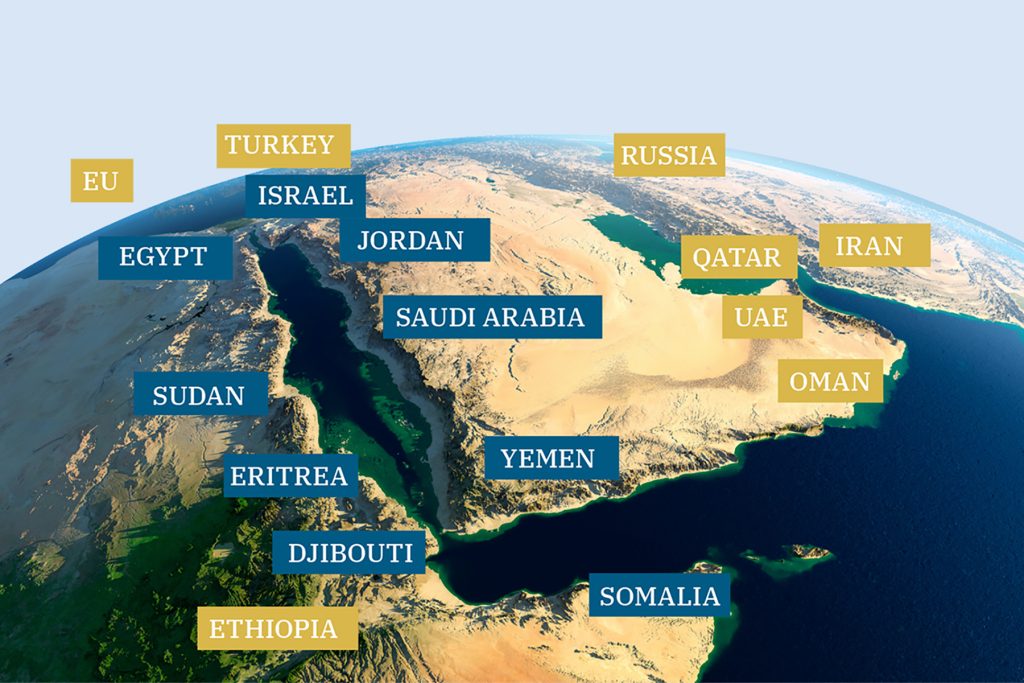Will the US be stationed in Tiran and Sanafir? Intensifying competition between Washington and Beijing.
In late April, the Arabic website “Madi Al-Masr” quoted Cairo security officials as saying that Riyadh had recently proposed to Washington to build a military base on the islands of Tiran and Sanafir. The islands, which were given to the Saudis by al-Sisi in 2016, are located at the entrance to the Gulf of Aqaba and are of geopolitical importance in the region. The issue of building a US military base in Tiran-Sanafir will probably be on the agenda during Trump’s visit to Saudi Arabia in May of this year.
On the other hand, the Egyptians strongly opposed this decision and considered this move a threat to the security of the Suez Canal and internal stability in Egypt. After the news was published, the reason for the Saudi proposal was announced to be to secure the Suez Canal and prevent the supply of weapons to the Palestinian-Lebanese resistance! However, Major General Samir Faraj from Egypt and Ahmed Al-Shehri from Saudi Arabia, appearing on the “BBC” program, denied this claim and said that the purpose of the statement was to create a rift between Cairo and Riyadh!
Why are the Tiran-Sanafir Islands important?
For Egypt, although the transfer of ownership of the islands to Saudi Arabia was met with domestic criticism, this decision is interpreted from a geopolitical perspective as part of Cairo’s strategy to maintain the alliance with Riyadh and gain financial and political support from this country. With this move, Egypt benefited from Saudi economic support during internal crises.
From a military perspective, these islands are important for Egypt as a strategic point for monitoring the maritime movements of informal groups or terrorist threats in the Sinai Desert and the Red Sea. Also, the proximity of these islands to the Suez Canal, which is the lifeblood of the Egyptian economy, increases the need to maintain the security of this region. Overall, for both countries, these islands act as a diplomatic and security tool in complex regional equations, beyond a territorial issue, and play an important role in maintaining the balance of power against competitors.
From the American perspective, Tiran and Sanafir Islands are of high geopolitical and military importance due to their strategic location in the Strait of Tiran and proximity to vital shipping lanes in the Red Sea. As part of the regional security puzzle, these islands are in line with CENTCOM’s interests in ensuring freedom of navigation and protecting its key allies, namely Saudi Arabia, Egypt, and the Zionist regime.
The White House indirectly monitors these islands through a military presence and security agreements, particularly through military bases in the region and cooperation with the Saudi and Egyptian navies. This presence allows the United States to monitor the movements of the resistance in the Red Sea and prevent potential threats to the port of Eilat and international trade routes. In the context of competition between great powers, the American military presence in the aforementioned islands will also strengthen their position against China and Russia in the northern Indian Ocean.
Intensification of the Washington-Beijing Geostrategic Competition
The first proposal to establish American military bases on the aforementioned islands to limit Russia in the Red Sea was made to Washington in March 2017. In the last nine years, important security events have occurred in the region, which have once again provided the necessary basis for the Saudis to present this proposal again. Although the second Trump administration is currently focused on the cases of Ukraine, Gaza, and Iran, sooner or later it will turn to the Chinese as the greatest threat to America’s position in the world system.
To contain China, the elites of both the Democratic and Republican parties concluded that they must remove Russia from the Beijing axis and redefine the Middle East security order through the Abraham Accords. Some analysts believe that the Americans, by borrowing from the experience of the “Cold War” era, intend to prevent the implementation of the “One Belt, One Road” project and by offering alternative routes such as “IMAC”, put China in a state of geopolitical suffocation. Essentially, the US military presence in the Gulf of Aqaba is in line with completing the puzzle of the “India-Middle East-Europe” corridor in the region.
Redesigning the Red Sea Security Architecture
In other words, the US is seeking to redesign the security architecture of the Red Sea. The deployment of US forces in Eritrea, Djibouti, Saudi Arabia, and possibly the Tiran-Sanafir Islands will allow CENTCOM forces and the US Navy to monitor the passage of ships in this area. In other words, the deployment of US forces on the southern shore of the Gulf of Aqaba in the Red Sea will allow them to prevent support for the Gaza resistance and the Lebanese resistance with the help of their allies’ intelligence.
Of course, some analysts believe that the US is essentially planning to increase its surveillance range in the northern Indian Ocean to contain the Chinese. In the meantime, the “green light” or Cairo resistance could play a decisive role. Although the islands of Tiran and Sanafir were ceded to the Saudis in April 2016, Cairo must decide whether it remains committed to the agreements reached in the security talks or intends to take a different path.

